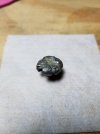At some point if a animal runs with a exit when the cavity fills with blood ,you will have some sort of a blood trail . It may be a short distance or a long distance depending on a lot of circumstances, single lung Double lung , heart , arterial , venial, size of exit ,cal impact vel , bullet choice ,animal , thick skinned thin skinned ,etc.etc . As hunters I hope we all understand this and never give up even when a animal runs with no apparent blood trail. I know my equipment and if I make a good shot with the bullet I use I know what too expect . I think that would be all you could ask for reguardless the outcome , unless you could absolutely prove otherwise . Anything is possible in the field , but rarely I would be wrong in this statement, bottom line when you know you made a good shot don't give up looking for the animal.The bullet probably didn't fail, unless it exceeded its capabilities.


